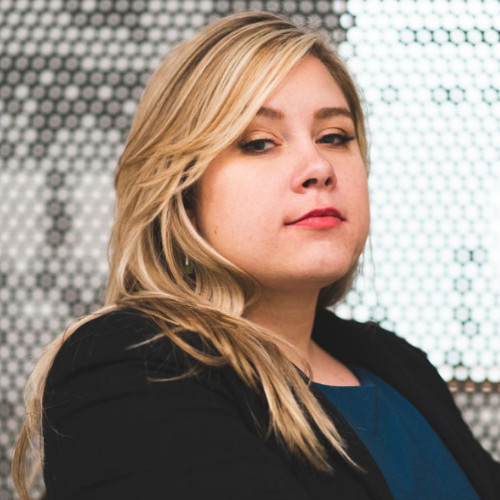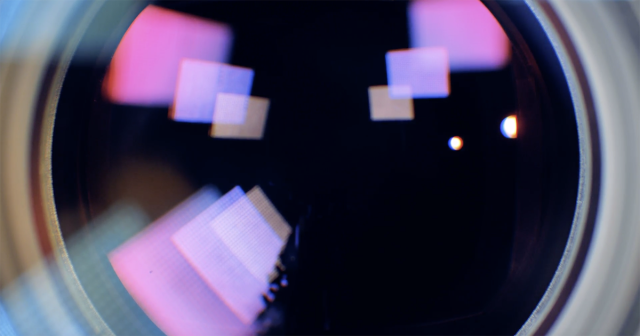TL;DR
- Film school and on set aren’t the only places where you can learn key cinematography skills, says DP Sarah Whelden. She says she picked up many of her leadership competencies in managerial roles outside the industry.
- Whelden believes that a DP’s role is to support the director and to help them execute their vision, while also making sure that the best ideas get heard on set. She emphasizes collaboration with her crew and believes that you can learn something from everyone, regardless of their experience level.
- Learn about her experience shooting ‟Chispa” using Fujifilm’s just-released GFX 100 II.
- Whelden will also share her thoughts on getting the most out of your crew as a cinematographer at NAB Show New York during the Cultivating Community and Collaboration session. Register now.
Sarah Whelden may have gone to film school, but she credits stints at a bike store and a scoop shop with teaching her lessons that have been crucial to her work on set.
Hampshire College taught her about documentaries; retail taught her management skills. These jobs were “a big part of learning to become a better DP, which was that sort of foundation of learning how to lead people,” she says.
After film school, Whelden moved to Portland and worked in a variety of roles for a commercial production house, then she transitioned to freelancing and, eventually, shifted focus to narrative storytelling, which helped her make the jump to LA.
“It was an interesting sort of experience jumping into a new space and creating a new community,” Whelden recalls.
Of course, Whelden notes, her career of choice necessitated the ability to build a quick rapport with new colleagues and new places.
“Just working as a DP requires traveling to new cities all the time, and having to build that community quickly. You know, in some cases, especially in a commercial, where you may only be around these people for a few days, and you need to really build something with them,” Whelden says.
“But then in just transferring my home city, it takes on a whole new sense of that because you need that long term community. And not only on set, but also just to help support you and your career as you move forward.”
VISION AND COLLABORATION
“For me, working as a DP is really about supporting the director,” Whelden says.
But it’s important to note that she doesn’t emphasize pecking order on set. “We’re a family more than anything, you know, and I don’t think anybody’s beneath anybody,” she says. “The hierarchy is there just to make sure something gets done because somebody has to have the final say.”
“But at the end of the day, it’s about supporting the vision of others and trying to like, really understand what they’re looking for, what the story is calling for, because, you know, even though I’m here to support others, part of supporting others is sort of bringing my own voice to the table.”
And in order to fully contribute, Whelden has found that she must understand her own voice to determine whether a project is the right fit for her (or if she’s the right fit for the project and the director). As part of that process, she asks, “What is the story? And how do I be true and honest to that? And also, sort of who are the storytellers? And how do I hold their vision?”
Additionally, Whelden tries to assess “does this feel like the director has a collaborative approach? Because, you know, some directors don’t. Some, you know, have more of an auteur approach, which is wonderful, but I may not be the best person to carry that for them. Because really, my whole philosophy is just based around this collaboration. It’s about giving everyone a voice on set, and listening to that voice and knowing at the end of the day, the best idea wins.”
Once she commits, Whelden knows “it’s not just me, as a cinematographer [responsible for the story]. There’s so many department heads, production designers and costume designers and key makeup artists to lift my work. And then there’s also, like, so many crew members who are working to support me and all these other departments, you know, my G and E team, my camera team, the colorist, and we’re all sort of like, working together to find what makes the story best.”
To be successful, Whelden says, “I need to trust the director just as much as the director needs to trust me. And, you know, I need to trust my team just as much as my team needs to trust me. And I think we all need to sort of have each other’s backs.”
On set, “it’s about looking out for things that might come up and trying to nip them in the bud before they happen. As much as possible. When things do happen, you know, if anything happens within camera, or lighting, that’s on me, you know,” Whelden says. “I am the DP, I’m the one who’s sort of like, leading these two departments, and us if, if anything happens within there, that’s my responsibility that I have to take.”
To facilitate that trust, Whelden looks at hiring a crew like, well, casting a movie. She explains, “Part of that is thinking about dynamics, not just with me, but with each other. Knowing… who are my key players, and then often letting them sort of choose the folks that they typically work with.”
This is especially important because “once you get on set, there are going to be a lot of different personalities, not just within my departments, but within all departments.”
“At the very least,” Whelden says, “I am setting an intention for how I like to work within my department and within other departments so that people know, going into the shoot, how to collaborate … it’s as much them knowing how to collaborate with me, as me knowing how to collaborate with them.”
And it’s not just the personalities that will be varied on set. The crew will often represent all ages and experience levels and backgrounds, as well.
“There’s so many different cultures and generations, ideally, that are coming together on set. And I think the best work comes out of so many people, so many different life experiences, coming together to create something.” However, she says, “It can be challenging, again, to sort of figure out how to manage those.”
Whelden explains that an important factor is recognizing that you can still learn from those who have fewer years on their resume. “It’s learning to sort of lead, but also learn at the same time.” But as DP, she knows to keep in mind that “I know what the director wants better than anybody in my department, because I’ve had a lot more conversations with them.”
“CHISPA”
One of Whelden’s recent projects, “Chispa,” aptly illustrates the challenges and joys of collaboration on set.
For a variety of reasons, Whelden says, “it was a really tricky shoot.” First, “Chispa” required both color and black-and-white deliverables. Second, the director wanted a lot of visual effects. And the kicker? No one had ever worked with the camera before.
Fujifilm sponsored the film, and in exchange, Whelden says, “We agreed to shoot on their new camera, which just got released [in mid September 2023], GFX 100 II.”
To raise the stakes even higher, Whelden says, “I didn’t even get the camera until maybe 48 hours, 72 hours, before we started shooting.”
She explains, “A lot of the normal testing and this and that would normally go into it wasn’t possible. So I had to sort of increase that sort of trust I needed to have in the people around me; I needed to trust the people from Fujifilm, who were there to, you know, help make sure the camera stayed functioning or brought up on our backup camera if there were any issues. But I also had to trust, you know, my camera department to just be communicative.”
Whelden also says that Fujifilm put a lot of faith in her for this project.
“Part of the mission was to test [the GFX 100 II] and show it off. But … I was there for the director, again, to see her vision through. So how do I make sure I’m delivering what Fujifilm needs as far as this camera? To make sure we’re pushing it and trying different things and seeing …what its capabilities are,” Whelden says. “And where, maybe, there’s a shortcoming that they have a little time to, sort of, work on before officially launching it, and kind of pushing the limits. But also making sure that none of that was jeopardizing the creative vision [of the] director.”
Ultimately, she says, “There was a lot of communication that had to go into this. We had a great, incredible team. But it required so much planning.”
Learn more about Whelden’s work and leadership philosophy at the Cultivating Community and Collaboration session at NAB Show New York.



